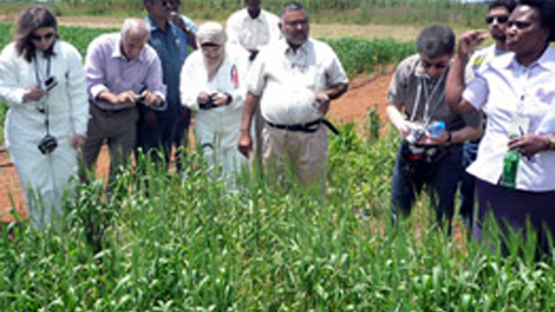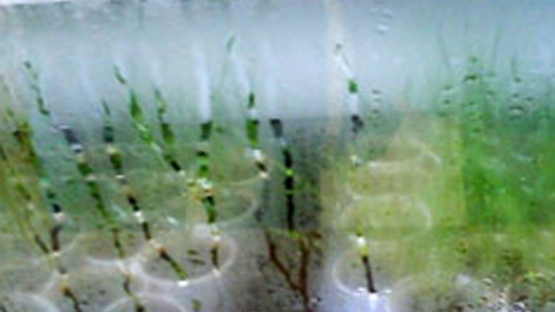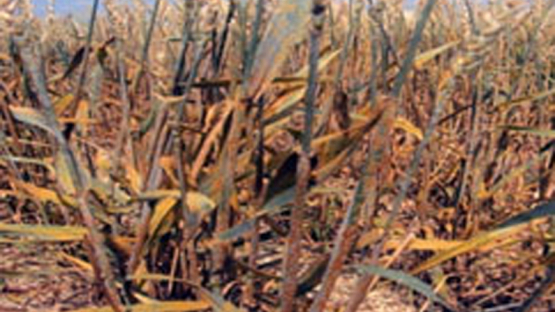The expected flow of the programme is mainly in four stages: from M0 to M4. Close to 300 000 mutant lines (M2+) have been generated by member countries since beginning of the project in 2009. M2 and M3 lines have been tested and lines exhibiting resistance have been advanced to further generations. The material is exposed to natural rust infection (Ug99 +), but complimented with artificial inoculation (screenhouses). Selected resistant mutants (M3+) are tested for confirmation at Moi University, Kenya, where land and irrigation facilities are made available. National programmes of Member States are able to visit and make selection as needed.

If you would like to learn more about the IAEA’s work, sign up for our weekly updates containing our most important news, multimedia and more.
Responding to the Transboundary Threat of Wheat Black Stem Rust (Ug99)
Mutation activities target rust diseases with emphasis on Ug99 to contribute to an eventually broadened gene base for rust resistance. Mutant lines that have resistance to Ug99, once selected, will effectively counter the threat to global wheat and barley production, the menace of Ug99.
Eighteen participating member countries will have something to smile about. Characterization of the resistance will be by morphology as well as through molecular marker assisted methods. The breeders will then apply Double haploid (DH) techniques to advance generations.

Project participants screening for stem rust resistance at the site at Eldoret, Kenya

Infection for purposes of screening at seedling stage is carried out in a dew chamber
Currently 13 lines with resistance to Ug99 are available, thereof eight M7 lines from Kenya. Four of these mutant lines have been subjected to National Performance Trials and two of them are currently on 3 acres for seed multiplication to be released to farmers in August 2013.
Selected material will be repatriated to contributors for testing under local conditions for traits of interests as well as testing at rust hot spots.

Dew chamber is essential to create good environment for rust spores to germinate and cause infection
To screen for the Ug99, rust spores were suspended in distilled water with a few drops of wetting agent Tween-20 and applied to the spreader lines using a sprayer with a fine nozzle at booting stage.
Inoculation was done in the evening just before or after dew formation to increase presence of free water necessary for spore formation and successful infection events.


